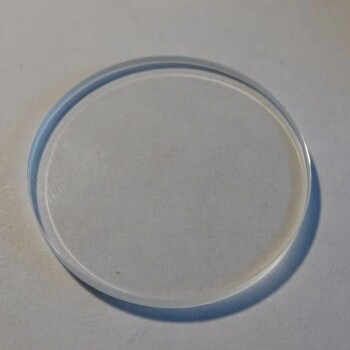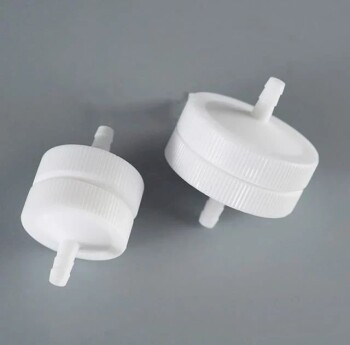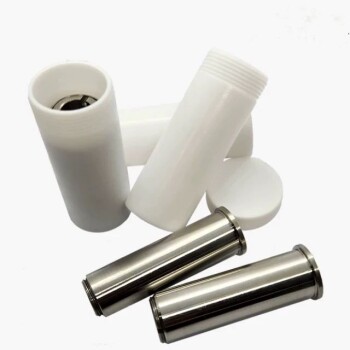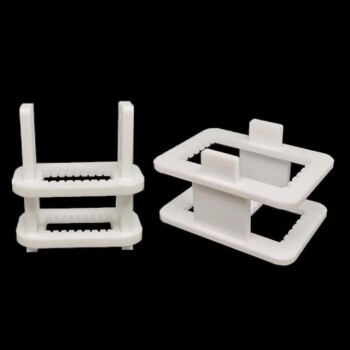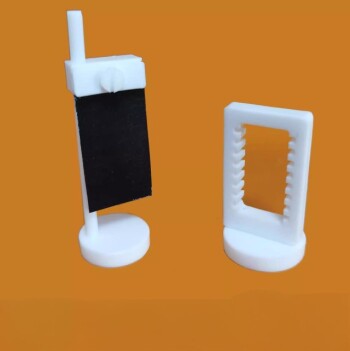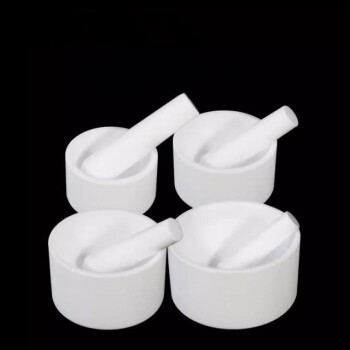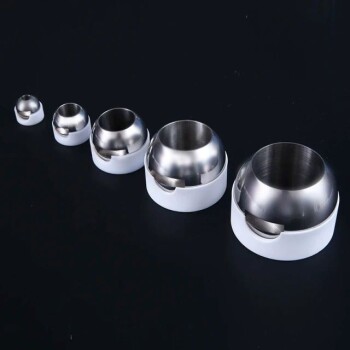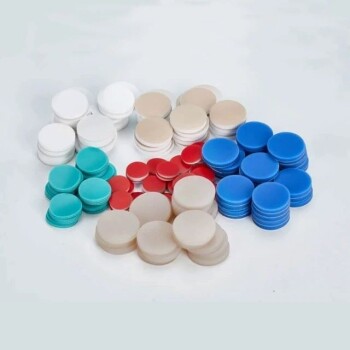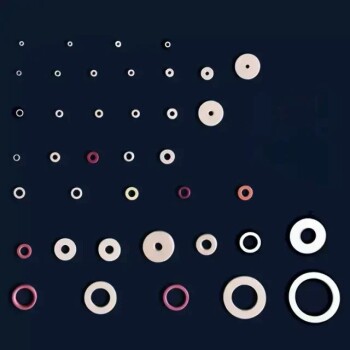The fundamental difference is their core function: Paint Protection Film (PPF) is a physical shield designed to absorb impacts from rock chips and prevent scratches, while a ceramic coating is a liquid-applied chemical layer that provides gloss, chemical resistance, and makes the vehicle dramatically easier to clean. PPF offers robust protection against physical damage, whereas a coating excels at environmental and chemical protection.
The core principle to understand is this: PPF is armor for your paint, while a ceramic coating is a slick, protective shell. They solve two fundamentally different problems, which is why they are often used together for a complete solution.
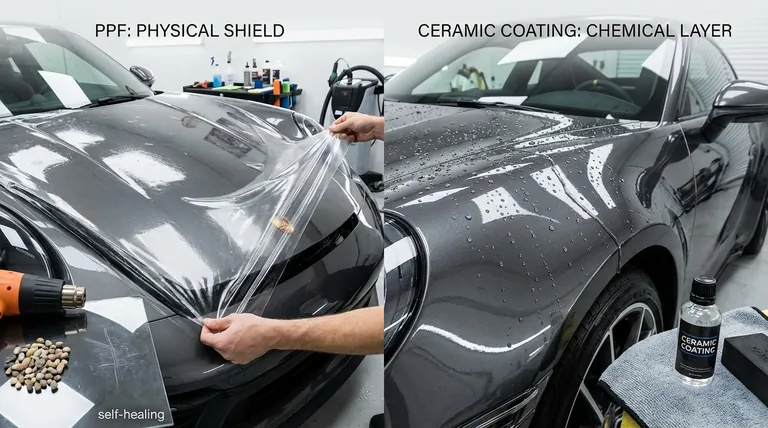
What is Paint Protection Film (PPF)?
A Physical, Sacrificial Shield
Paint Protection Film (PPF) is a thick, transparent, and flexible urethane film. It is physically applied over your vehicle's paint, acting as a sacrificial layer.
Its primary purpose is to absorb the energy from physical impacts. This is what stops a rock chip from actually chipping the paint underneath.
The Power of Self-Healing
Most modern, high-quality PPF has a "self-healing" top coat. When minor scratches or swirl marks appear on the film's surface, applying heat from the sun or a heat gun causes the material to reform, effectively making the marks disappear.
What is a Ceramic Coating?
A Chemical, Hardened Layer
A ceramic coating is a liquid polymer that is applied by hand and chemically bonds with your vehicle's factory paint. Once cured, it forms a thin, rigid, and transparent layer of protection.
Hydrophobic and Easy to Clean
The defining characteristic of a ceramic coating is its hydrophobic nature, meaning it repels water. Water beads up and rolls off the surface, taking dirt and grime with it.
This property, combined with its slickness, prevents contaminants like bird droppings, bug splatters, and tree sap from bonding to the paint. This makes washing the car significantly faster and easier.
Understanding the Core Trade-offs
Impact vs. Chemical Protection
PPF is the undisputed winner against physical damage. A ceramic coating offers no meaningful protection from a rock chip or a key scratch.
Conversely, a ceramic coating provides superior chemical resistance. It creates a barrier that is more resilient to the acidic etching from bird droppings or water spots than PPF's top coat is on its own.
Visual Appearance and Feel
A high-quality ceramic coating will noticeably enhance the paint's gloss, depth, and clarity. It creates a slick, glass-like finish.
PPF is designed to be optically clear and nearly invisible. However, you may be able to see the film's edges on close inspection, and it does not add the same level of slickness or gloss as a dedicated coating.
The Combined Approach: The Ultimate Protection
The most comprehensive solution is to use both products together. Installers apply PPF to the high-impact areas of the vehicle first—such as the front bumper, hood, and side mirrors.
After the PPF is installed, a ceramic coating can be applied over the entire vehicle, including on top of the PPF. This gives the film hydrophobic properties, makes it easier to clean, and protects it from environmental contamination, while the rest of the car gains the gloss and chemical resistance of the coating.
Making the Right Choice for Your Goal
By focusing on your primary objective, you can determine the best path forward for your vehicle.
- If your primary focus is preventing rock chips and scratches: Paint Protection Film (PPF) is the only effective solution for this goal.
- If your primary focus is making your car look glossy and extremely easy to clean: A ceramic coating is the ideal choice.
- If your primary focus is comprehensive, long-term preservation: Apply PPF to high-impact zones and then layer a ceramic coating over the entire car for the best of both worlds.
Understanding their distinct roles empowers you to build the precise level of protection your vehicle deserves.
Summary Table:
| Feature | Paint Protection Film (PPF) | Ceramic Coating |
|---|---|---|
| Primary Function | Physical impact protection (rock chips, scratches) | Chemical resistance, gloss enhancement, ease of cleaning |
| Material | Thick, flexible urethane film | Liquid polymer that chemically bonds to paint |
| Key Property | Self-healing surface | Hydrophobic (water-repelling) surface |
| Best For | High-impact areas (bumper, hood, mirrors) | Overall paint appearance and maintenance |
Ready to give your vehicle the ultimate protection it deserves?
Whether your primary goal is defending against rock chips with PPF or achieving a stunning, easy-to-clean finish with a ceramic coating, the right solution depends on your needs. For a comprehensive, long-term preservation plan, the best approach is often a combination of both.
Contact KINTEK today to discuss your vehicle's specific requirements and discover how our expertise can help you build the perfect protection package. Let's preserve your investment together.
Get Your Personalized Protection Plan Now
Visual Guide
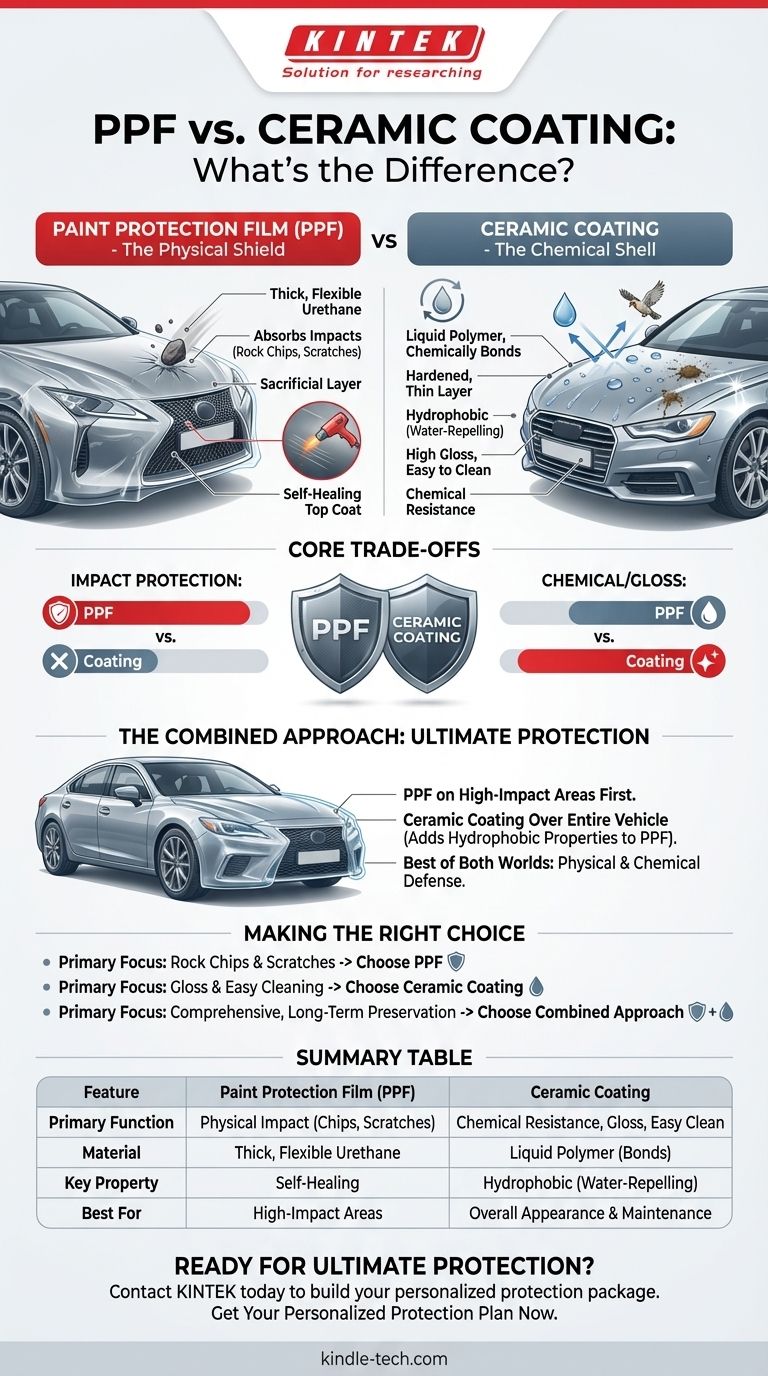
Related Products
- Inclined Rotary Plasma Enhanced Chemical Vapor Deposition PECVD Equipment Tube Furnace Machine
- Custom CVD Diamond Coating for Lab Applications
- 400-700nm Wavelength Anti Reflective AR Coating Glass
- Custom PTFE Teflon Parts Manufacturer for Sampling Filters
- Custom PTFE Teflon Parts Manufacturer for PTFE Bottle Oil Fume Sampling Tube
People Also Ask
- What is the difference between CVD and PECVD? Choose the Right Thin-Film Deposition Method
- What is PECVD used for? Achieve Low-Temperature, High-Performance Thin Films
- What is the difference between PECVD and CVD? Unlock the Right Thin-Film Deposition Method
- What is plasma enhanced chemical vapor deposition? Achieve Low-Temperature, High-Quality Thin Films
- What is plasma enhanced chemical vapour deposition process? Unlock Low-Temperature, High-Quality Thin Films


